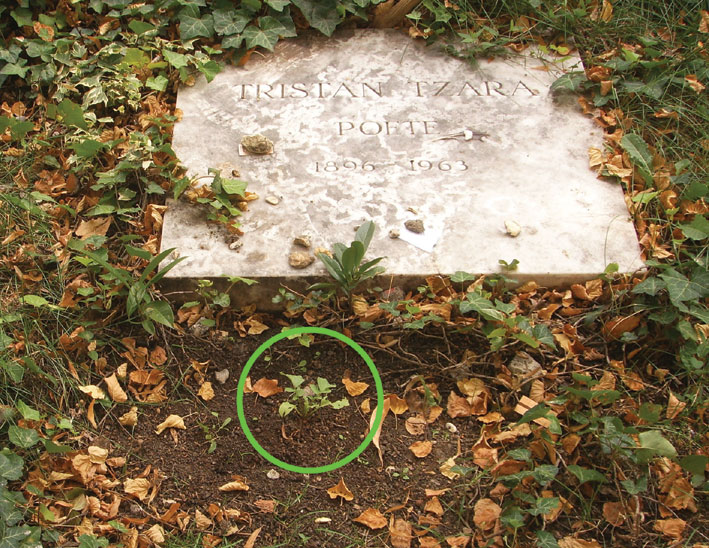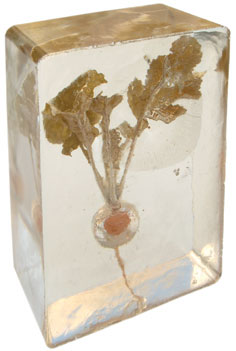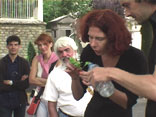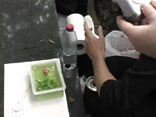
Le
Tzaradis
" To oppose the nonsense of the world with the meaninglessness of
art" (Hans Arp)
Cimetière Montparnasse, Paris:
We sow a radish on the grave of the DADA poet Tristan Tzara (French: radis)
and tend the plant daily.
After 42 days, following a short speech, we harvest the perfect "Tzaradis"
and
conserve it on site in casting resin. The title of the work - le Tzaradis
- is a triple
allusion: to the nom de plume of the poet, to the name of the plant and to
the
word
paradise (German: Paradies).
Tristan Tzara, born in Romania in 1896 under the name Sami Rosenstock, is
primarily connected with the DADA movement, which began in Zurich in 1916.
Faced with the horrors of the First World War, Tzara, along with other exiles
there,
began to search for new forms to lend expression to the resultant feelings
of
powerlessness and frustration. DADA responded to the insanity of the time,
which
could no longer be expressed using traditional means, and to the society which
had spawned it, with a strategy of provocative criticism. A protest which
initially
rejected any fixed agenda.
In 1919 Tzara moved to Paris where he was one of the founders of the Paris
DADA
group, out of which Surrealism emerged in 1923.
Tzara, the master of word play, had thus, for the second time, a significant
role
in the founding of one of the most important art movements of the 20th century.
Next to the historical importance of Tristan Tzara, it was his unusual grave
in the
Montparnasse Cemetery whose dishevelled wildness and attractive scruffiness
roused our attention. It was instantly clear to us that we had found an ideal
place
for an artistic intervention.
complete
speech for the "tirage" (french)
complete speech for
the
"tirage" (german)




